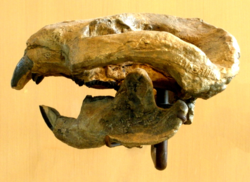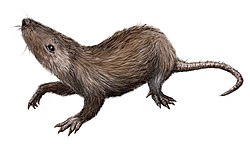| Taeniolabis Temporal range: Danian, | |
|---|---|
 | |
| Taeniolabis taoensis | |
| Scientific classification | |
| Domain: | Eukaryota |
| Kingdom: | Animalia |
| Phylum: | Chordata |
| Class: | Mammalia |
| Order: | † Multituberculata |
| Family: | † Taeniolabididae |
| Genus: | † Taeniolabis Cope, 1882 |
| Type species | |
| Taeniolabis taoensis Cope, 1882 | |
| Other species | |
Taeniolabis ("banded incisor") [2] is a genus of extinct multituberculate mammal from the Paleocene of North America.



